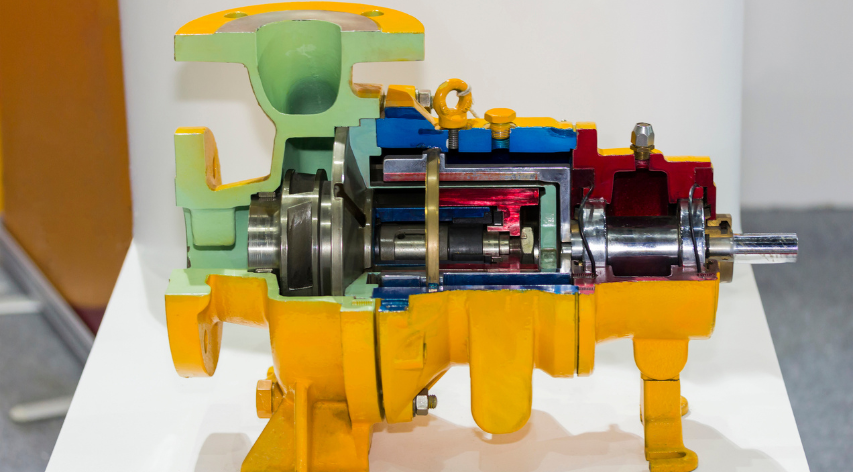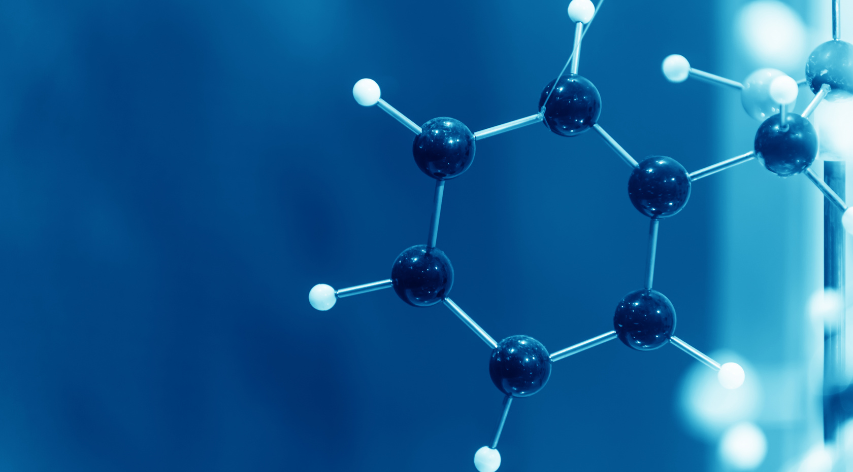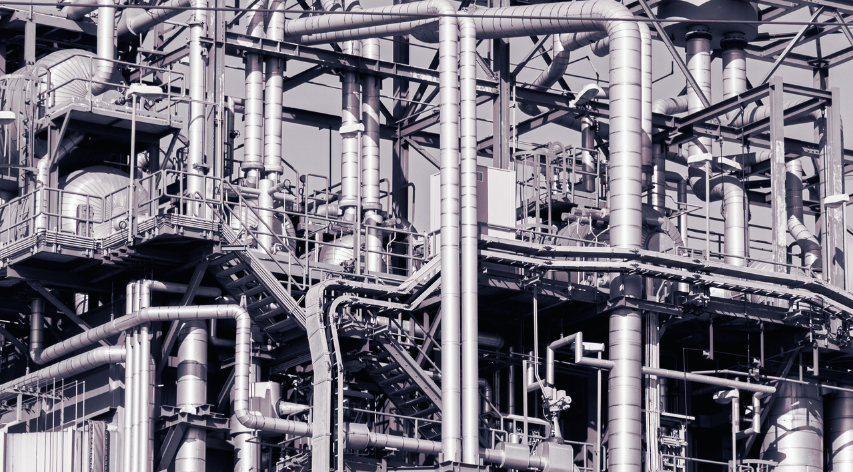Vibration Issues With a Large Catalyst Drier

Summary
At a Gulf Coast site, a large catalyst drier began experiencing vibrations after start up and suffered a failure. The drier internal diameter is approximately 7 feet, measures 40 feet long and is supported at each end by 2 large trunion shafts on which are mounted 2 rollers. There is a large ring gear mounted on the outside diameter of the drum at the feed end. A variable frequency drive motor is mounted to and drives a reduction gearbox. On the output end of the gearbox is a pinion gear that meshes with the ring gear located on the drier. This arrangement provides infinite speed adjustment of the drier. Excessive vibrations had occurred shortly after commissioning and damage to the teeth on the ring gear resulted. Repairs were made and the unit started again at which point the author was contacted to perform an analysis. This was accomplished by using a 16-channel ZonicBook 618 analyzer to capture continuous data for post processing and analysis. As part of this project, impact testing was also performed on the motor/gearbox drive system of the unit.
The motor/gearbox system had 2 natural frequencies identified at 1425 cpm and 1125 cpm which are within the operating speed range of the motor. For this reason, excessive overall motor vibrations of 0.3 ips to 0.7 ips were observed during the analysis period. With the gearbox pinion being overhung from the original support, this also resulted in vibration of the pinion against the ring gear. This may have contributed to the pinion failure experienced earlier. Amplification factors of 32 and 60 were calculated for the horizontal and vertical vibration responses respectively. A temporary motor support was fabricated and installed to increase the horizontal and vertical stiffness of the system, in effect raising the natural frequencies above the operating speed range of the VFD motor.
Vibration amplitudes taken on the motor after installation of the support were reduced to between 0.1 ips and 0.2 ips. These values were observed during all three test conditions (ambient, hot, and hot with feed). These are very acceptable values. A permanent support was designed and installed. The unit is now operating with acceptable vibration levels. Aside from the resonant condition, the structural stiffness of the original support for the motor/gearbox system (1000 lb./mil) was not sufficient to maintain good alignment between the pinion and ring gear. All trunion bearings appeared to be in good condition with no bearing defect frequencies apparent in the spectral data.
Discussion and Documentation of Analysis
Figure 1, to right, shows two plots. The top plot is a dynamic stiffness transfer function plot. The bottom plot is a spectrum of the response accelerometer located at the motor opposite drive end horizontal position. To generate this plot, the motor/drive system was impacted with a calibrated force hammer in the horizontal direction and the subsequent response measured on the drive system in the horizontal direction. In the top plot the units are in pound force per mil displacement. In general, the stiffness of any system is fairly constant until the application of the force is placed and removed at a frequency corresponding to a natural frequency. When applied at a natural frequency, the stiffness drops dramatically, and results in a small amount of force causing a large displacement. As can be seen in the top plot, the stiffness of the motor / drive system is fairly constant at more than 1000 pounds per mill or 1,000,000 pounds per inch. This value is fairly low compared to normal design stiffness of other machinery categories. What is of major significance is the fact that a natural frequency exists in the horizontal direction at a frequency of 1425 cpm. At 1425 cpm it can be seen that a force of only 3.274 pounds results in a displacement of 1 mil. When the data was taken on November 19, 2010 the motor speed was reported at 1400 rpm. Operating at this speed, which is almost exactly at the horizontal natural frequency, resulted in overall vibration amplitudes between 0.3 ips and 0.7 ips (instantaneous values of
\n1.6ips were measured).
Figure 2, on page 4, is a time waveform of the response accelerometer located on the motor opposite drive end horizontal location during the horizontal impact test. From the cursor positions shown in the plot, it can be seen that the response takes well over 1.5 seconds to decay. This is a result of very little damping and high amplification factors resulting from fabricated steel supports and foundations. There are 15 cycles between the cursor time positions of 0.1738 seconds and 0.8027 seconds. This calculates to a frequency of 1431 cycles per minute which is the natural frequency. From the amplitudes shown at the 2 cursor positions (0.0671 ips and .0153 ips) it was calculated that the system has a critical damping ratio of 1.57% and an amplification factor of 32.88. In other words any amount of vibratory energy input at a frequency of 1431 cpm will be amplified 32.88 times, resulting in unacceptable vibration. As an example, a new energy efficient motor manufactured to the IEEE 841 standard that had a 1x horizontal vibration of 0.04 ips on a shop test stand would have a 1x horizontal vibration of 1.32 ips in this application.
Figure 3 below presents the same type plots as seen above for the vertical impact testing of the motor / gearbox system. In this case it is seen that a natural frequency exists at 1125 cpm in the vertical direction. This is due to a lower stiffness in the vertical direction than the horizontal direction due to the geometry of the support system. As can be seen the average stiffness is just at 1000 pounds per mil which is slightly lower that the stiffness seen for the horizontal direction in Figure 1 above. Again, this stiffness is lower than that usually seen for machinery of this type. What is of major significance is the fact that a natural frequency exists in the vertical direction at a frequency of 1125 cpm. At 1125 it can be seen that a force of only 2.592 pounds results in a displacement of 1 mil. When the data was taken on November 19, 2010 the motor speed was reported at 1400 rpm. Operating at this speed, which is very near the vertical natural frequency, resulted in overall vibration amplitudes between 0.4 ips and 0.7 ips (instantaneous values of 1.5 ips were measured).
Figure 4 below is a time waveform of the response accelerometer located on the motor opposite drive end vertical location during the vertical impact test. From the cursor positions shown in the plot, it can be seen that the response takes well over 1.5 seconds to decay. Again, this is a result of very little damping and high amplification factors resulting from fabricated steel supports and foundations. There are 22 cycles between the cursor time positions of 0.1730 seconds and 1.345 seconds. This calculates to a frequency of 1126 cycles per minute which is the natural frequency. From the amplitudes shown at the 2 cursor positions (0.0763 ips and .0244 ips) it was calculated that the system has a critical damping ratio of only 0.8% and an amplification factor of 60.6. In other words any amount of vibratory energy input at a frequency of 1126 cpm will be amplified 60.6 times, resulting in unacceptable vibration. As an example, a new energy efficient motor manufactured to the IEEE 841 standard that had a 1x vertical vibration of 0.04 ips on a shop test stand would have a 1x vertical vibration of 2.42 ips in this application.
Editor’s Comment, or, a “Conclusion” to this article:
The circumstances described in this analysis are another example (see the June, 2012 Machinery Chat Article “The Potential Pitfalls of Fabricated Machinery Foundations” of the potential vibration/stiffness issues of fabricated machinery supports. The design of fabricated machinery supports in most organizations is assigned to structural designers. These folks usually do not have a background or experience in machinery applications. It is considered an industry-best-practice when designing fabricated machinery foundations to encourage, or even insist upon, collaboration between the structural designers and machinery experts.
But should an unexpected or unexplained vibration or failure issue develop, Becht Engineering has personnel with industry leading experience and expertise to help solve the most challenging vibration issues.







